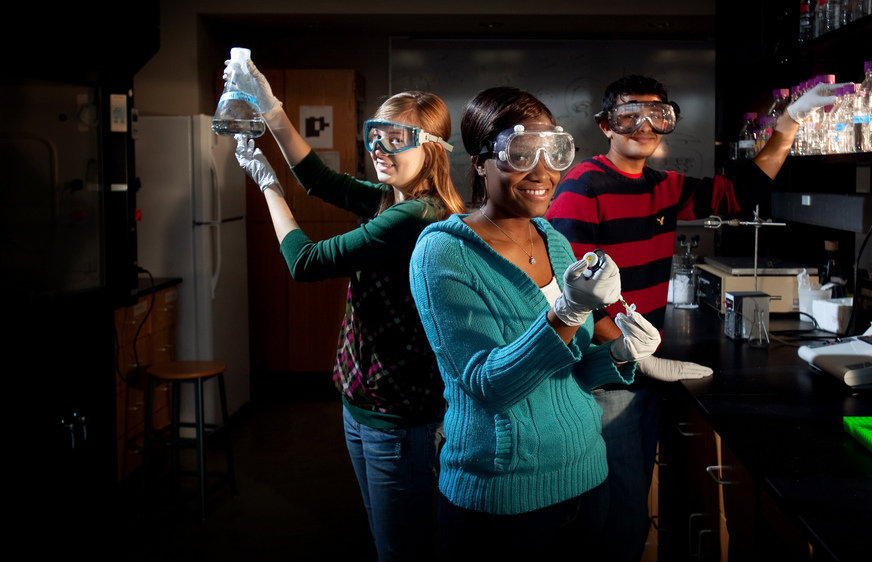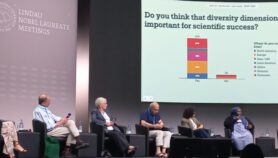By: Daya Reddy
Send to a friend
The details you provide on this page will not be used to send unsolicited email, and will not be sold to a 3rd party. See privacy policy.
Refocusing higher education on multidisciplinarity would benefit scientists and economies, says Daya Reddy.
Science and engineering education is widely seen as a core component of most countries’ development plans. So one has to ask: can it be shaped so it better responds to these plans in a context of rapid scientific and technological progress?
External views and pressures affect the design of higher education curriculums. For example, industries and other employers often express a desire for graduates who are equipped to hit the ground running.
Governments often have similar expectations. Making a direct link between economic growth and development carries with it the implication that a planned increase in the number of engineering and science graduates would contribute, in the short term, to meeting economic goals.
Such expectations, however understandable, are nevertheless at odds with what a university education should be all about — and may, in fact, undermine longer-term social and economic progress.
One contemporary reality is that few graduates will remain in a single career throughout their working lives. It follows that their university training must provide a thorough grounding — a knowledge base, a foundation — on which to continue to assimilate new ideas in the context of a constantly changing environment.
Curriculums and degree programmes that are structured with such longer-term perspectives in mind are quite different to those that focus on providing tools and techniques for immediate use.
Varied perspectives
What does this mean in practice? What elements would one expect to see in such curriculums? I highlight two elements.
The first of these is multidisciplinarity. The world in which we live is more complex than ever, and both formulating and solving problems requires expertise from multiple perspectives.
For example, planning for the effective use and conservation of marine resources requires expertise that cuts across the biological and chemical sciences and engineering. It would include mathematical modelling of marine population behaviour, as well as consideration of social issues and consequences.
Students need to become familiar with the content, techniques and methodologies of a range of disciplines beyond their major area of study. In particular, they need to be exposed to the management, social and human sciences.
This means that curriculums should include a combination of core, discipline-based material as well as material from related areas — with the connections between these explored in an integrated manner. The components of such curriculums would need to be developed as part of a clearly conceived whole, not simply by being bolted onto an existing structure.
But caution is needed: there is a risk of adopting an approach that is too broad or superficial because it is aimed at learning a little about many different areas. Breadth across many disciplines must be accompanied by in-depth knowledge and expertise in a core area.
The second key element in designing curriculums of enduring value is that of critical literacy.
Students, whatever their specialisation, should learn to read and analyse critically, to write logically and clearly, and to communicate technical concepts in a way non-experts can understand. These elements are essential in a world of multifaceted problems and projects, in which scientists or engineers are required to assimilate and use material from various areas, some of which may not have been part of their training.
Restructuring learning
To move away from such traditional, discipline-bound approaches to learning, universities must restructure organisational units and teaching methods in a way that promotes multidisciplinary thinking and education.
The Okinawa Institute of Science and Technology in Japan is an interesting example of how this can be done. At this new, graduate-level institution, there are no traditional departmental structures. The institute promotes what it calls ‘science without borders’ — which carries the double meaning of globalisation and absence of departmental boundaries — alongside disciplinary strength. In their first year, students rotate through three research units before choosing their final research programme.
This kind of fundamental change, and the planning it requires, is likely to be a slow process in existing universities. But, in spite of institutional inertia, the important thing is to start.
Universities need to embark on such processes with resolve. Before restructuring, they should begin by developing a clear vision of what the education of modern students, and of scientists and engineers in particular, should look like.
Open and frequent communication between government, business and universities — for example via advisory boards — will help promote a good understanding of the objective: to turn out properly rounded graduates.
And what would success look like? Imagine a workforce made up of a healthy mix of new graduates working side by side with those who have many years’ experience. The broad and yet solid foundation of the novices, combined with their ability to assimilate information from diverse areas, would complement the support of their more experienced colleagues. It is a recipe for a modern, effective approach to problem-solving.
The pivotal role of science, engineering and technology in socioeconomic development is unquestioned. The goal is not only to educate sufficient numbers of scientists and engineers, but also to ensure that this education has a solid foundation coupled with an ability to think critically, to adapt to change and to contribute to change.
Daya Reddy holds the South African research chair in computational mechanics in the Department of Mathematics and Applied Mathematics at the University of Cape Town, South Africa, and is president of the Academy of Science of South Africa. He can be contacted at [email protected]














